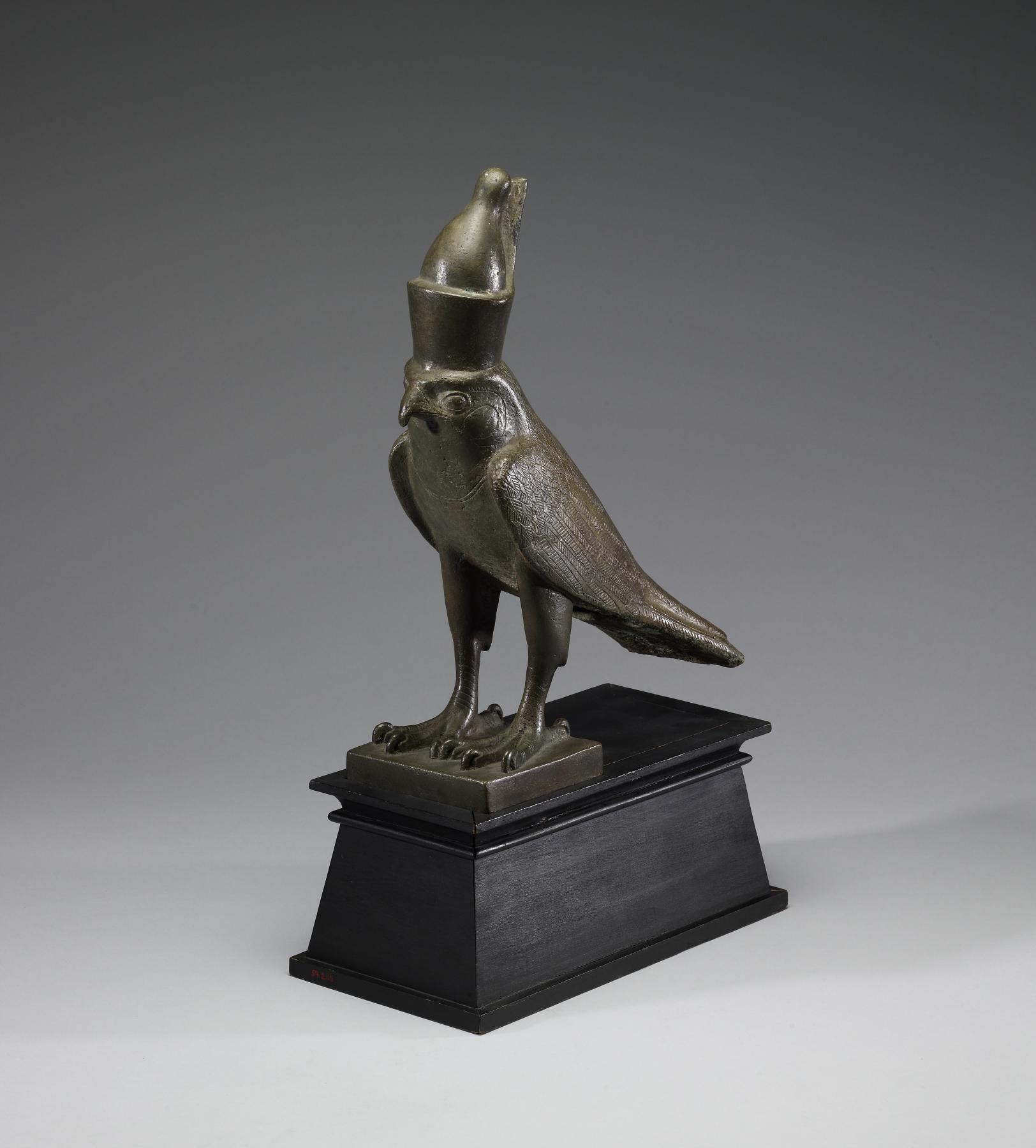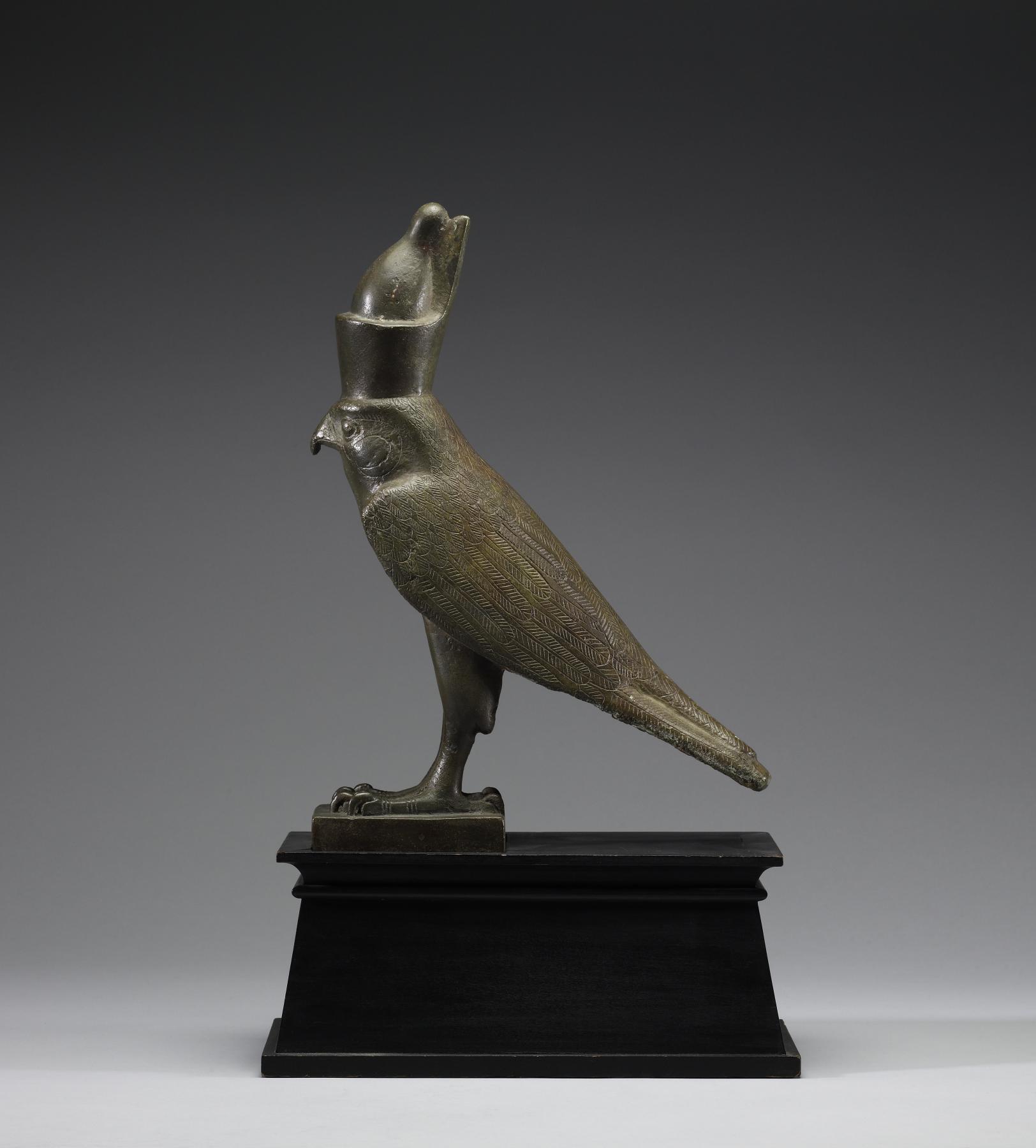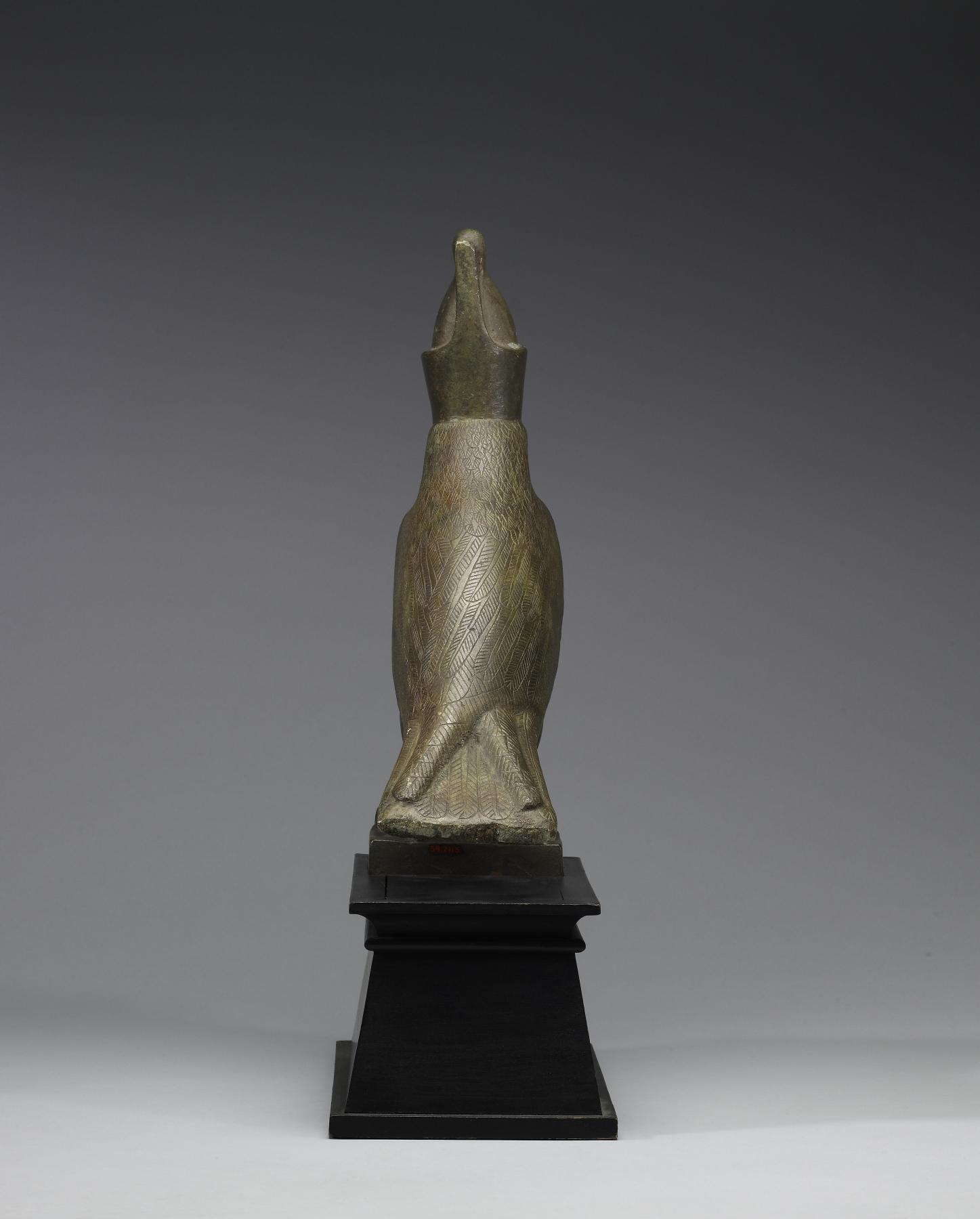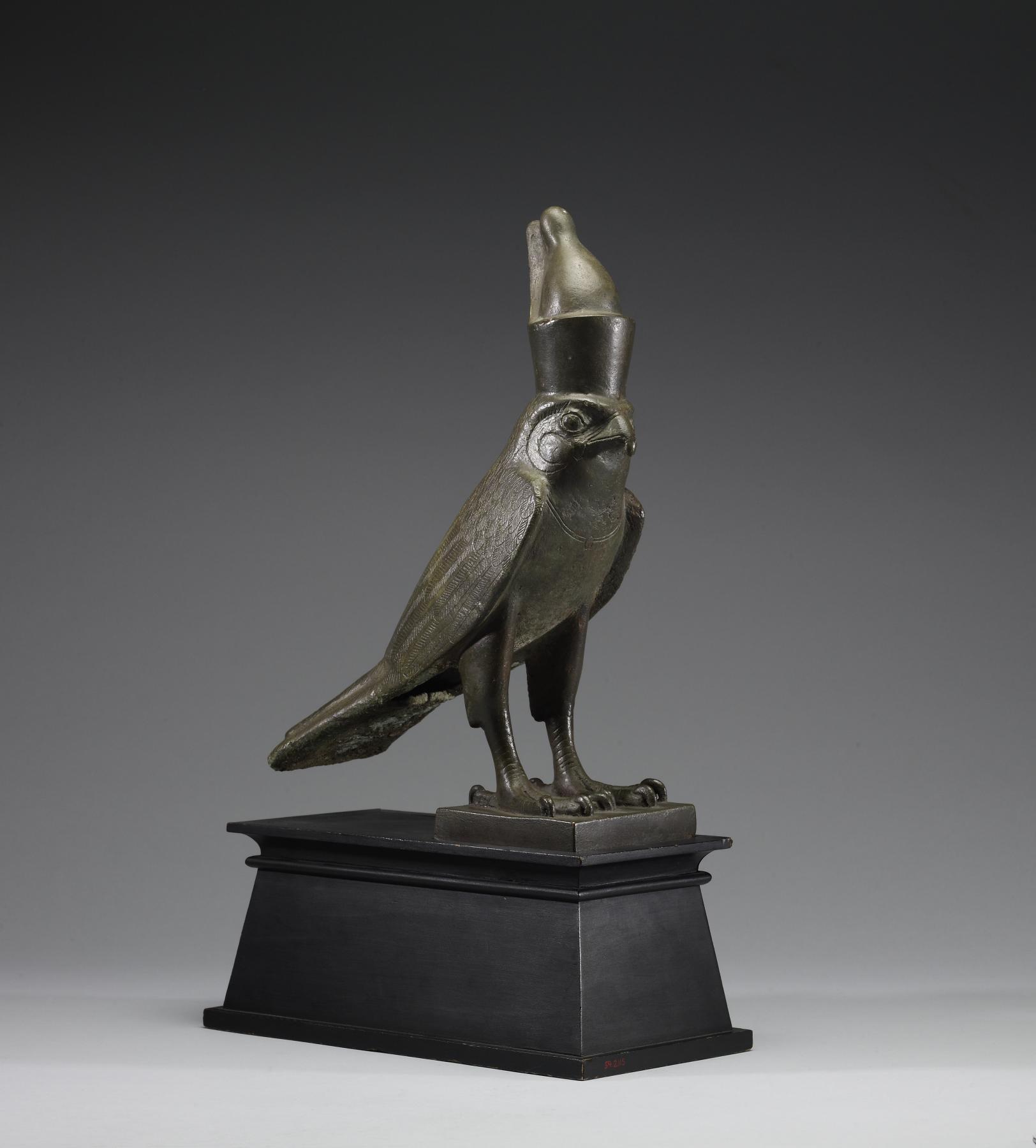Horus Falcon
This falcon is a verson of the god Horus, as indicated by the Double Crown (pschent) of Egypt he wears. The rectangular hole under the tail indicates that this statuette may have been used as a reliquary for bones from a sacred falcon.
Provenance
Provenance (from the French provenir, 'to come from/forth') is the chronology of the ownership, custody, or location of a historical object. Learn more about provenance at the Walters.
Dikran Kelekian, New York and Paris [date and mode of acquisition unknown]; Henry Walters, Baltimore, 1931, by purchase; Walters Art Museum, 1931, by bequest.
Conservation
| Date | Description | Narrative |
|---|---|---|
| Treatment | Examined , cleaned | |
| Treatment | Examined and cleaned in preparation for exhibition. | |
| Examination | Mount repaired. | |
| 7/1/1981 | Examination | examined for condition |
Geographies
Egypt (Place of Origin)
Measurements
H: 14 1/2 x w: 4 5/16 x D: 10 9/16 in. (36.8 x 10.9 x 26.9 cm); H with tang: 15 1/16 x W: 4 5/16 x D: 10 9/16 in. (38.2 x 10.9 x 26.9 cm); H with base: 18 7/8 x W: 5 7/8 x D: 11 11/16 in. (48 x 15 x 29.7 cm)
Credit Line
Acquired by Henry Walters, 1931
Location in Museum
Not on view
Accession Number
In libraries, galleries, museums, and archives, an accession number is a unique identifier assigned to each object in the collection.
In libraries, galleries, museums, and archives, an accession number is a unique identifier assigned to each object in the collection.
54.2115
















